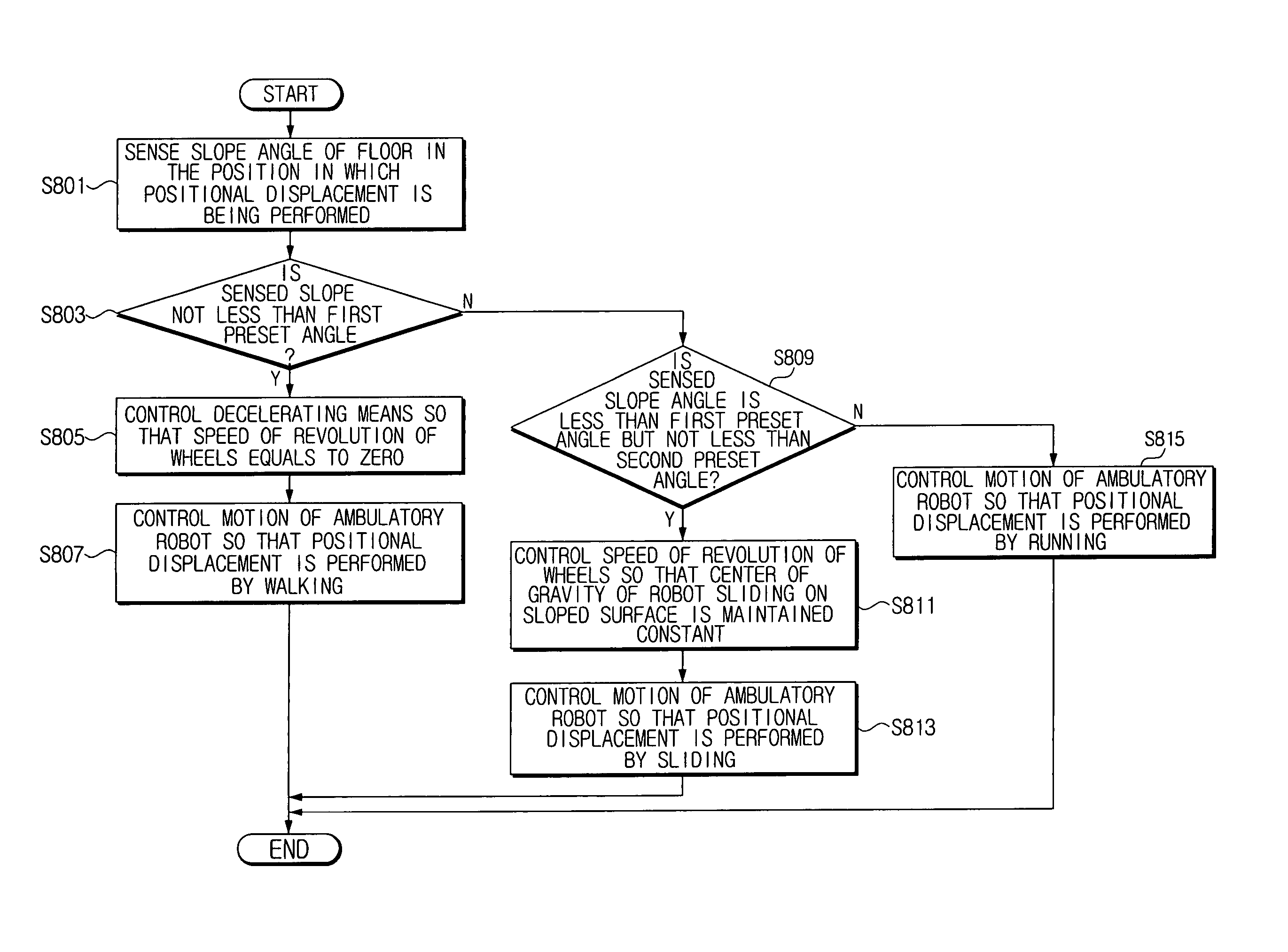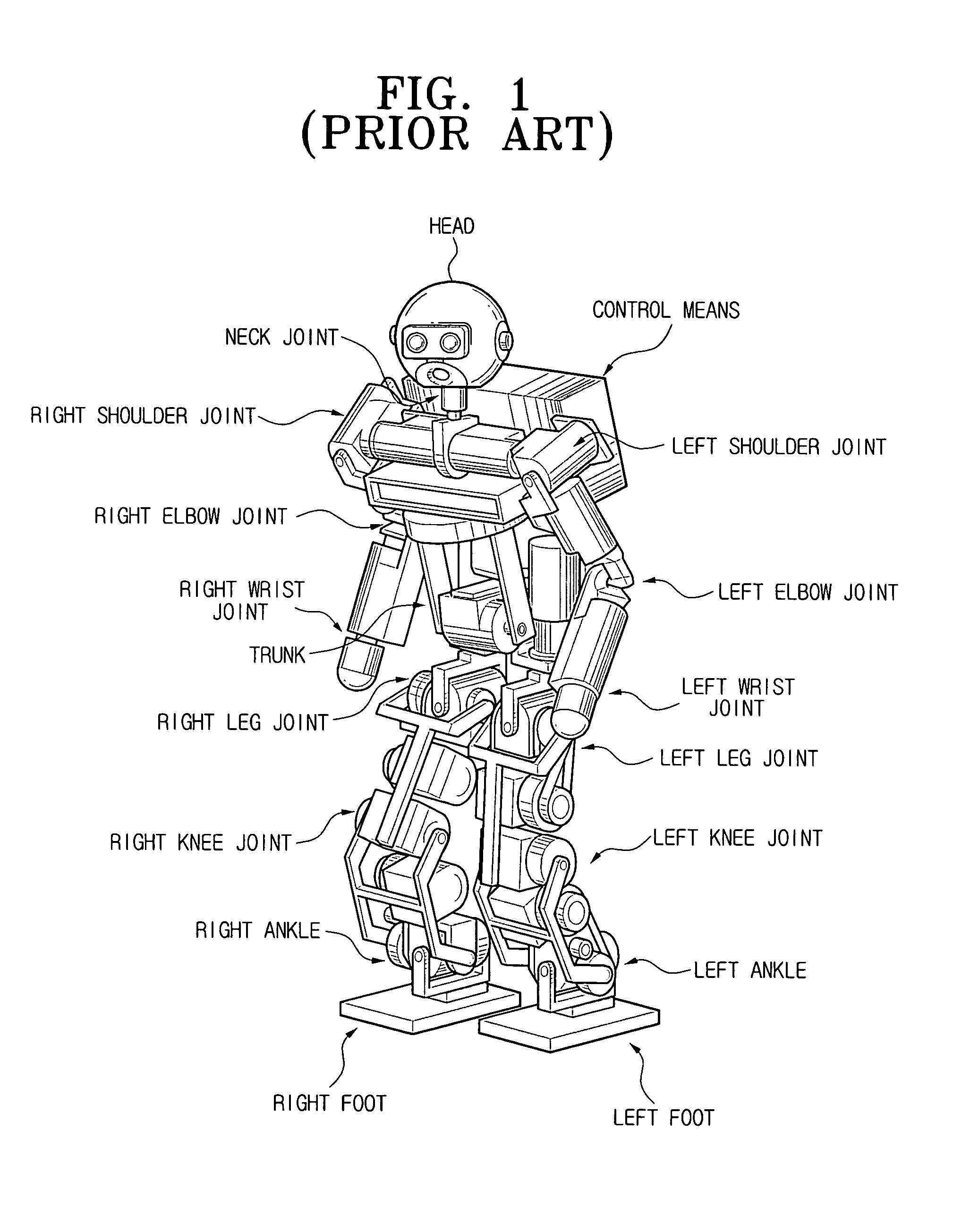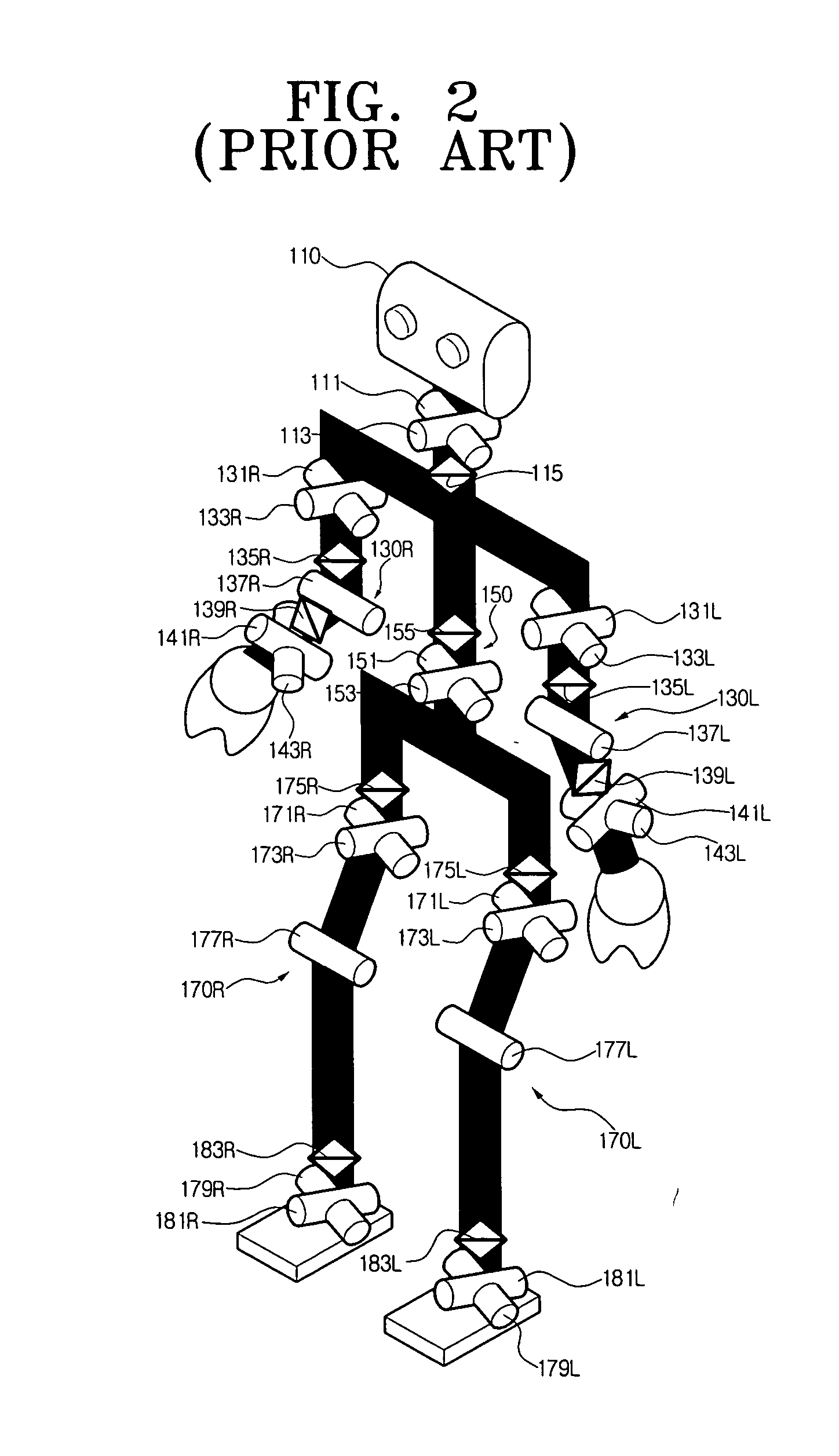Ambulatory robot and method for controlling the same
a technology of ambulatory robots and robots, which is applied in the field of ambulatory robots, can solve the problems of inability to be widely used in practical applications, increased weight and volume of driving motors, and inferiority of bipedal ambulatory robots according to the prior art in terms of maximum advance speed
- Summary
- Abstract
- Description
- Claims
- Application Information
AI Technical Summary
Benefits of technology
Problems solved by technology
Method used
Image
Examples
Embodiment Construction
Korean Application No. 2003-5076, filed Jan. 25, 2003, and entitled: “Ambulatory Robot and Method for Controlling the Same,” is incorporated by reference herein in its entirety.
The present invention will now be described more fully hereinafter with reference to the accompanying drawings, in which preferred embodiments of the invention are shown. The invention may, however, be embodied in different forms and should not be construed as limited to the embodiments set forth herein. Rather, these embodiments are provided so that this disclosure will be thorough and complete, and will fully convey the scope of the invention to those skilled in the art. Like reference numerals refer to like elements throughout.
FIG. 4 illustrates an example of an ambulatory robot according to an embodiment of the present invention. Herein, the ambulatory robot will be described with reference to a bipedal ambulatory robot with two feet by way of example. Referring to the drawing, the bipedal ambulatory ...
PUM
 Login to View More
Login to View More Abstract
Description
Claims
Application Information
 Login to View More
Login to View More - R&D
- Intellectual Property
- Life Sciences
- Materials
- Tech Scout
- Unparalleled Data Quality
- Higher Quality Content
- 60% Fewer Hallucinations
Browse by: Latest US Patents, China's latest patents, Technical Efficacy Thesaurus, Application Domain, Technology Topic, Popular Technical Reports.
© 2025 PatSnap. All rights reserved.Legal|Privacy policy|Modern Slavery Act Transparency Statement|Sitemap|About US| Contact US: help@patsnap.com



